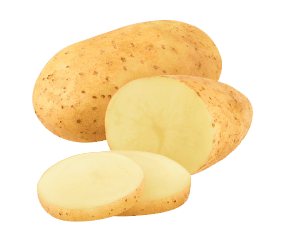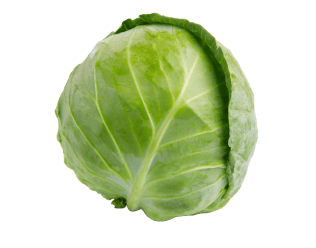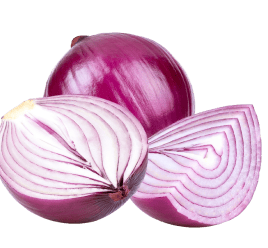Understanding how your Levy works
Hort Innovation’s role in managing and investing R&D levies for grower productivity and profitability
It is Hort Innovation’s job to work with industry to invest the vegetable, potato and onion R&D levies and Australian Government contributions into initiatives to help growers be as productive and profitable as possible, through the Hort Innovation Levy Funds.
The R&D levy is payable on potatoes, vegetables and onions that are produced in Australia. This levy is collected by the Australian Government and then entrusted to Hort Innovation. It is then Hort Innovation’s responsibility to work with industry to invest the levies – together with Australian Government funds in the case of R&D – into strategic R&D initiatives.

Everything you need to know about the levy investment system
Investments specific to Hort Innovation are guided by the industry’s Strategic Investment Plan (SIP) and Annual Investment Plan (AIP). SIPs provide an overarching roadmap for industry to follow, and AIPs detail how levy dollars will be spent each year to achieve industry goals.
The SIP is the roadmap that helps guide Hort Innovation's oversight and management of investment programs.
The SIP lays the foundation for decision making in levy investments and represents the balanced interest of the industry. The most important function of the SIP is to make sure that levy investment decisions align with industry priorities. In 2021, SIPs were refreshed to reflect the current needs of the respective industries. The refresh involved close consultation with growers, industry participants and the wider research community in each relevant sector.
The SIP details the industry's strategic goals centred around four outcome areas:
- industry supply, productivity and sustainability;
- demand creation;
- extension and capability;
- business insights.
Under each of those outcomes, there are industry specific strategies and key performance indicators that provide guidance on how industry will work towards achieving the outcomes. Where a previous SIP is available, a performance report has been developed to demonstrate how investments delivered generated impact for growers.
The reports provide an overview of key achievements delivered through each levy investment, and how they relate to the industry's SIP outcomes and strategies.
While a SIP provides an oversight of investment over the next five years, the AIP explains how levy funds are going to be invested over a twelve-month period.
AIPs are developed each year by Hort Innovation, informed by the SIP and industry consultation, and then discussed with the industry SIAP for feedback and prioritisation.
Investment decisions will be guided by the industry SIP and prioritised based on potential industry impact, as well as availability of levy funds.
The AIP provides detailed information on:
- Funding availability
- How the industry is investing against their SIP outcomes
- Details on current investments across R&D.
There are many avenues that investment ideas come through – such as growers, delivery partners, previous projects, research networks, industry bodies, regional extension plans, and extension personnel. Before any ideas are progressed, Hort Innovation will investigate whether investment aligns with the SIP and whether investment is needed in this area.
To gain industry insights for strategic levy investments, Hort Innovation consults with growers through the industry Strategic Investment Advisory Panel (SIAP).
Hort Innovation develops draft investment recommendations based on investment ideas that are aligned to the SIP. Each recommendation includes high-level information on the aims of the project, outcomes, deliverables and budget.
The recommendations are then taken to the relevant advisory panel for feedback and prioritisation based on potential impact and available funding. Details of projects that will be progressing are then featured in the AIP. The SIAP consists of supply-chain stakeholders from the relevant industries, most of whom are levy-paying growers.
Panels also include industry representative body representation and, where applicable, a lead agency representative from within the National Horticulture Research Network. The SIAP is in place to discuss investment ideas, in order to provide advice to Hort Innovation on potential levy investments. The advice they give is guided by the industry SIP. The SIAP provides a vital link between meeting the priorities of industry and helping Hort Innovation to make decisions on how, where and when investments need to be made.
After the investment has been prioritised, it’s then up to Hort Innovation to get the project up and running. This involves a tender process where the best delivery partner is chosen to undertake the project. Each delivery partner needs to submit regular milestones that report on their progress and at the end of each investment, a final report is produced that is made available to industry on what the project has achieved.
Investments in the Hort Innovation Fresh Potato; Onion Fund and Vegetable Fund are detailed in the Your Investments page of Hort Innovation's website. Resources that are produced by the projects - such as fact sheets and guides - are also available through the Research reports and more page. Hort Innovation also sends alerts about project updates to its members.
Paying a levy doesn't automatically make you a Hort Innovation member, but signing up is free. The levy-funded communications programs, also provides regular information on levy-funded activity.
R&D Levy Rates

Potatoes
$0.48
per tonne of fresh potatoes
$0.49
per tonne of processing potatoes

Vegetables
0.485%
of the gross value at the first point of sale

Onions
$2.90
per tonne for R&D
$1.00
per tonne for marketing


